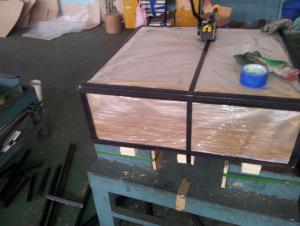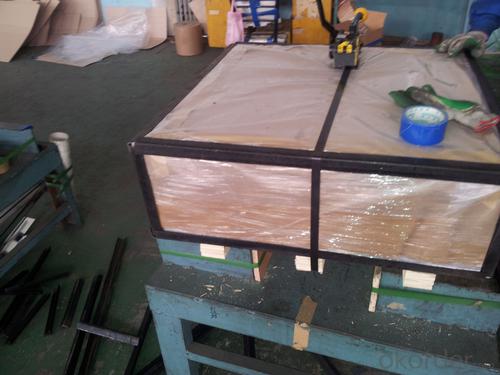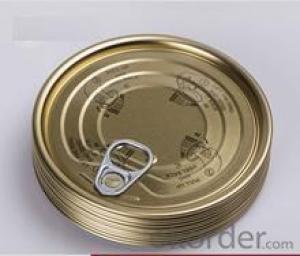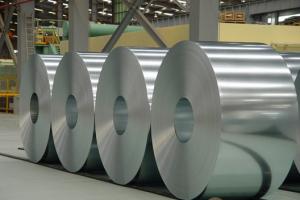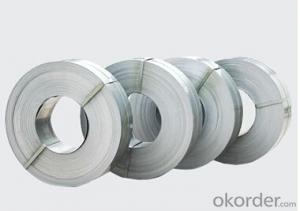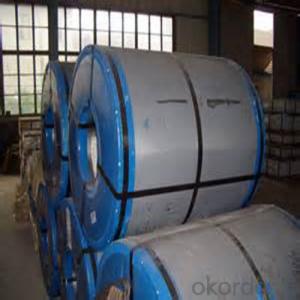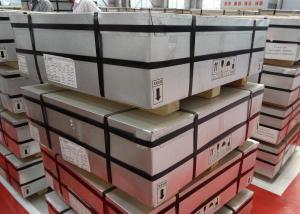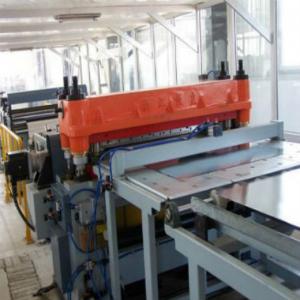High Quality of Tinplate for Paint Chemical Can Containers
- Loading Port:
- China Main Port
- Payment Terms:
- TT OR LC
- Min Order Qty:
- -
- Supply Capability:
- -
OKorder Service Pledge
OKorder Financial Service
You Might Also Like
Our tin plate (TP) products are made by coating tin using electrolysis on the surface of thin coldrolled steel sheet (black plates), with a thickness of 0.14~0.6 mm. Its shiny surface finish, superb corrosion resistance and formability make tin plates an ideal choice for the food industry and industrial parts producers. Our tin free steel sheet (ECCS) is widely accepted as a more economical substitute for the tin coated steel. Our TP/TFS products are widely used in the production of 3-piece and 2piece (D&I, DRD) cans as well as can lids and bottoms. Our products serve a variety of purposes, including material for steel EOE, toys, and electronic parts.
Our Tinplates Specification:
Standard: ISO 11949 -1995, GB/T2520-2000,JIS G3303,ASTM A623, BS EN 10202
Material: MR,SPCC
Thickness:0.15mm - 0.50mm
Width: 600mm -1150mm
Temper: T1-T5
Annealing: BA & CA
Coil Inner Diameter: 508mm
Weight: 6-10 tons/coil 1~1.7 tons/sheets bundle
Passivation:311
Oil: DOS
Surface: Finish,bright,stone,matte,silver
Packing:
1、For sheets: plastic or waterproof paper, metallic cover and angles, steel strips,wooden pallet.
2、For Coils: plastic or waterproof paper,plastic protect plate,steel strips.
Both Prime and Second Quality Are Available!!!
- Q: Can tinplate be welded or soldered?
- Yes, tinplate can be both welded and soldered. Welding involves fusing two pieces of metal together using heat, while soldering involves joining metal components using a lower melting point filler material called solder. Tinplate, which is a thin sheet of steel coated with a layer of tin, can undergo these processes with appropriate techniques and materials.
- Q: How is tinplate tested for quality and durability?
- Tinplate is tested for quality and durability through various methods such as visual inspection, coating weight measurement, corrosion resistance tests, and mechanical tests. Visual inspection ensures that the tinplate has a consistent surface finish, free from any defects or imperfections. Coating weight measurement is conducted to determine the thickness of the tin coating, ensuring it meets the required specifications. Corrosion resistance tests evaluate how well the tinplate withstands exposure to various corrosive environments. Mechanical tests assess the strength, hardness, and ductility of the tinplate, ensuring it can withstand bending, forming, and other manufacturing processes without any issues. These testing methods collectively ensure that the tinplate meets the desired quality and durability standards.
- Q: What are the welding methods used for tinplate?
- The welding methods commonly used for tinplate are spot welding, seam welding, and resistance welding. These methods ensure a strong and durable bond between tinplate sheets, making them suitable for various applications such as food cans and packaging materials.
- Q: What are the main competitors of tinplate in the packaging industry?
- The main competitors of tinplate in the packaging industry include aluminum, plastic, and glass.
- Q: How is tinplate affected by exposure to chemicals?
- Tinplate is typically resistant to corrosion and can withstand exposure to various chemicals without significant damage or reactions. However, certain aggressive or highly acidic chemicals may cause corrosion or tarnishing on the tin coating, leading to a potential degradation of its protective properties. Therefore, the extent to which tinplate is affected by exposure to chemicals largely depends on the specific nature and concentration of the substances it comes into contact with.
- Q: How is tinplate used in the cosmetics industry?
- Tinplate is commonly used in the cosmetics industry for packaging purposes. It is used to create metal containers, such as tin cans or tubes, that house various cosmetic products like creams, lotions, or powders. Tinplate's durability and resistance to corrosion make it an ideal material for ensuring the safety and longevity of cosmetic products. Additionally, its attractive appearance allows for branding and customization options, enhancing the overall appeal of the product.
- Q: What are the main trends in tinplate packaging?
- The main trends in tinplate packaging include a shift towards eco-friendly and sustainable materials, increased customization options for branding purposes, and the integration of technology for improved convenience and functionality.
- Q: What are the main challenges in tinplate canning process?
- Some of the main challenges in the tinplate canning process include ensuring the proper sterilization of cans to prevent contamination, maintaining consistent quality control to meet regulatory requirements, managing the speed and efficiency of the production line, and addressing issues related to can integrity such as dents or leaks. Additionally, the cost of tinplate material and the environmental impact of its production and disposal are also significant challenges that need to be addressed.
- Q: What are the main challenges in the production of tinplate?
- Some of the main challenges in the production of tinplate include sourcing high-quality tin and steel materials, ensuring proper adhesion of tin coating to the steel substrate, maintaining consistent tin coating thickness, preventing surface defects such as tin whiskers or blisters, and meeting environmental regulations related to waste disposal and emissions.
- Q: How is tinplate used in the manufacturing of household appliances?
- Tinplate is commonly used in the manufacturing of household appliances as it provides a protective and decorative coating. It is used to create the outer shell or casing of appliances such as refrigerators, washing machines, and ovens. The tin coating helps to prevent corrosion and rusting, ensuring the longevity of the appliance. Additionally, the shiny and smooth surface of tinplate enhances the aesthetic appeal of the appliances, making them more visually appealing to consumers.
Send your message to us
High Quality of Tinplate for Paint Chemical Can Containers
- Loading Port:
- China Main Port
- Payment Terms:
- TT OR LC
- Min Order Qty:
- -
- Supply Capability:
- -
OKorder Service Pledge
OKorder Financial Service
Similar products
Hot products
Hot Searches
Related keywords
